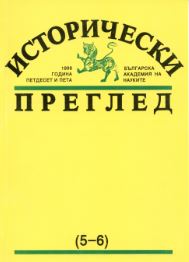Разшифроване на езика на символите. „Реформите“ на Лъв VI Мъдри в дворцовия и публичния церемониал
Deciphering the Language of Symbols: Leo the Wise’s Reforms of the Court and Public Ceremonial
Author(s): Liliana SimeonovaSubject(s): History, Cultural history, Political history, Middle Ages, 6th to 12th Centuries
Published by: Институт за исторически изследвания - Българска академия на науките
Keywords: Kletorologion of Philotheos; imperial atriklines; Leo’s reforms of Byzantine ceremonial
Summary/Abstract: To the medieval man, events functioned not just practically but also symbolically. In medieval society, court and public ceremonial occupied an important place. Byzantine ceremonies were loaded with signs, or symbols, which were borrowed mostly from the Roman Christian system of cultural codes. The ceremonial closely followed the liturgical calendar of the Orthodox church. Contrary to the generally shared opinion that Constantine Porphyrogenitus was the greatest reformer of the middle-Byzantine ceremonial, L. Simeonova argues that it was not Constantine but his father, Leo the Wise (886–912), who introduced a series of innovations into the ceremonial of his day. These innovations have found reflection in a contemporary document, the so-called Kletorologion of Philotheos. Philctheos was an imperial atriklines, that is, the person responsible for the organization of the banquets and receptions at the palace. Thanks to the Kletorologion as well as other sources, Leo’s reforms of Byzantine ceremonial could be studied at several levels. In the first place, Leo’s universalist claims found reflection in the increased participation of foreigners in the court ceremonial: these were the so-called “emperor’s people” (i. e., foreign minor title-holders employed in the imperial guard), guests from other Christian nations (e. g., “the important Bulgarian friends” and their suite), and Muslim prisoners of war. Leo made a series of changes in the ceremonial in order to have as many foreigners included in it as possible: this represented him as a truly universal ruler. In the second place, under Leo, some of the religious holidays observed by the court and the people of Constantinople were loaded with additional symbolism: the best example was the pompous five-day celebration of the Feast of St. Elias who was seen as a patron-saint of the Macedonian emperors and especially of Leo VI. Leo also introduced some anniversaries into the calendar: for example, the anniversary of his father’s death (29 August) and the anniversary of his and his brother’s ascent to power (30 August) were celebrated with great pomp, too. In the third place, Leo resumed the celebration of some ancient festivals (e.g., the celebration of the emperors’ brumalia at the court) which further promoted the imperial idea. Finally, Leo’s innovations affected the colour-and-number symbolism vested with the court ceremonial: they found reflection in the numbers and special clothes of the guests invited to the imperial table, the decoration of the banquet halls, and so on. To decode the symbolism of Byzantine ceremonial was not an impossible task for the Byzantine observer who was highly apprehensive of the language of signs. Ceremonial was thus seen as an efficient tool of imperial propaganda; it was periodically updated in order to meet the ideological needs of the epoch and the ruling dynasty.
Journal: Исторически преглед
- Issue Year: 1999
- Issue No: 5-6
- Page Range: 3-20
- Page Count: 18
- Language: Bulgarian
- Content File-PDF

